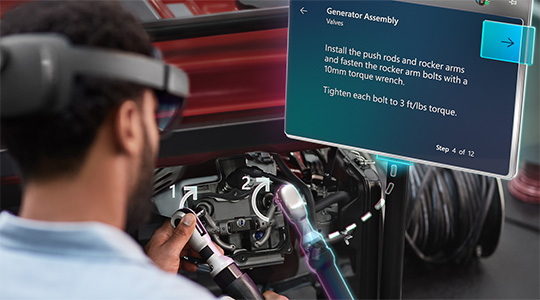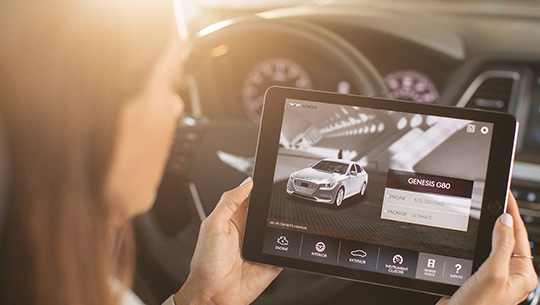The future is hard a thing to grasp and the potential of emerging technologies are hard to conceptualize of before they are in our hands. Science fiction, however, when done well, can offer a window into a not so distant future. Two recent short films, Sight and Hyper-Reality, go a long way in giving laymen a glimpse of what lies in store for us with augmented and mixed reality (AR/MR).
Both of them have a decidedly Luddite and dystopian take on how these technologies will affect society. In many ways, their fears are grounded in a logical continuation of how current regimes of power and influence use existing technologies to this end. But for most people (re: consumers) the political nature isn’t as important as how cool they will make life. And in terms of visual thrills and further virtual immersion, AR/MR has a lot to deliver.
To give a glimpse into the future, we examine the two sci-fi films and offer an analysis of what particular aspects are already in the works and how they could change our lives sooner rather than later.
Sight (2012)
The sci-fi short-film Sight was produced by Israeli students Eran May-raz and Daniel Lazo as a project for the Bezaleal Academy of Arts. Starring Ori Golad and Deborah Aroshas, it is set in the very near future and portends one in which eye-contact implants offer users comprehensive augmented/mixed reality experiences. The plot of the film is oriented around Ori Golad’s character, who is an engineer at the AR development company Sight, and Deborah Aroshas’ character, with whom he goes on a date.
The short film features sharp cinematography that contrasts sterile real-life scenes with eye-grabbing over-layed virtual content, produced by their Sight contacts. This contrast attains a dimension of mounting dread as the film develops, thanks to the score, eeriness of the characters’ irises and the impressive acting from Golad. His performance, in general, stands out due to the unshakeable uncanniness that defines his characters slick, dislocated, and ultimately corrupted charm. The film, which lasts just under eight minutes, is succinct and masterly builds apprehension within an atmosphere of indefinable uneasiness.
Real World Applications: Smart Contacts and the Gamification of Life
Sight imagines a future in which the logical conclusion of AR/MR technology is delivered through something similar to contact lens. The appeal is obvious — it’s unobtrusive. The failure of Google Glasses, which appeared on the market after Sight was released, was the result of several factors. Foremost in many people’s initial reactions, though, were a disinterest in wearing such unfashionable and attention-grabbing devices. Something to the effect of ‘smart’ contacts are still far away but how they exist within the short film clearly outlines the long-term end-goal of current AR/MR projects.
Perhaps more interesting, however, is the emphasis put upon how AR/VR can gamify seemingly banal or obligatory activities. In Sight, chopping cucumbers becomes a game in which there a several levels (varying difficulties of chopping thinness) and frying an egg involves directing the yolk toward several goals on the pan as it cooks. The short film also makes reference to a running app, which could easily be imagined as a sort of Mario Kart like replica in which runners can chase the ‘ghost’ of their previous times.
Similar gamifying techniques have been implemented into current mobile apps and have succeeded to varying degrees. The best feel intuitive and natural, the worst contrived and pointless. In many ways Sight, though delivering a distinctly different message, provides a key example of the potential for AR/MR to deliver fun, simple and engaging gamified elements to everyday life.
Hyper-Reality (2016)
In many ways, it very easy to imagine Sight and Hyper-Reality taking place in the same theoretical future. They both feature a world that very much resembles the current day, barring the implementation of contact lens-based AR/MR technology. But whereas Sight places it gaze upon social interactions and gamification, Hyper-Reality focuses upon how the new technologies will affect advertisement, consumption and individuals’ existential role within this modality.
The short film follows a middle-aged woman as she rides public transport to a shopping center whereupon her account — her identity — comes under attack. The cinematography in it is much more frenetic and “digital” than in Sight. Visually, it is intentionally a disorienting flood of advertisements and virtually augmented interiors: the walls of the bus pop with ads for football clubs, the supermarket is turned into a gaudy flash of lights and her heads-up display looks like a cross between a casino and the game Candy Crush Saga. It is very effective and lends itself well to the overwhelming air of disempowerment and co-option that director Keiichi Matsuda supposes AR/MR technology will usher in.
Real World Applications: Advertisement
After wading through the not-so-subtle warnings of technological oppression at the hands of corporate quantification and sensorial blitzes, Hyper-Reality offers a peek into how AR/MR will revolutionize the nature of advertising.
For the most part, the internet and the physical world exist in separate realms. These new technologies, however, will allow physical goods to be augmented with data and visuals that inform and attract potential customers. In the same way that internet ads target the user's preferences, this film imagines how goods themselves — like yogurt — will be able to do the same. For customers, this could mean picking up a can of tomatoes and clicking on it to see a list of possible recipes, expanded nutritional information or even games for the kids. As of now, technology such as this already exists in its infant forms.
A Brave New Brand World?
Both films depart from the assumption that AR/MR technology is going to drive us into a future in which users are further disconnected, more technologically-dependent, and controlled by corporate, technological apparatuses. A depressing dystopian future, for sure. Among and between this vision, however, is a look into theoretical advancements that are far closer than many users imagine. Everything depicted in both films is, at this point in time, imaginable and possible. If the dour forecast abates, we will shortly be enjoying the reign of a wonderfully immersive and connected new technological age.























